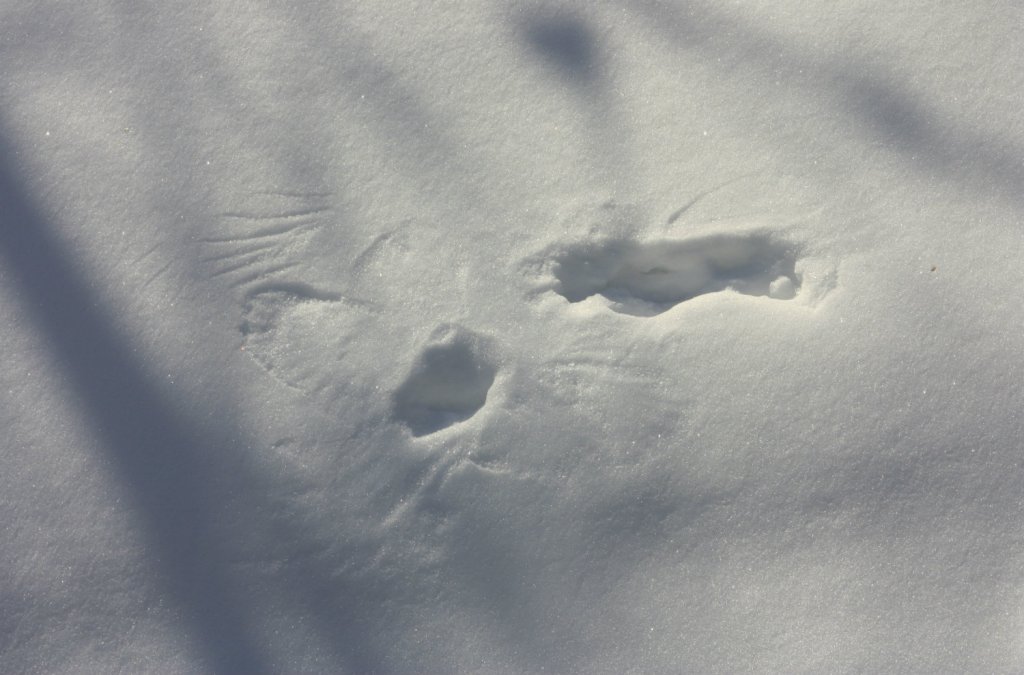Posted by Matthew Sim
It was a bright, sunny winter afternoon in Calgary, nearly two years ago to the day. I had just retreated from a chilly walk around my neighborhood and was warming up when I happened to glance out the upstairs window. Upon doing so, I noticed a strange shape down on the snow. It took me a minute to figure it out, but once I realized what I was looking at, the story began to come together piece by piece. See what you come up with.

When you looked at this shot, you might have said that you see a bird’s impression in the snow. You would have been right. Now, you might have been a little more specific and described seeing a raptor’s impression. If you got this far, you did great. It’s not very easy to deduce much else. However, some may have gone even further, observing the shape of the raptor, comparing with descriptions in field guides and creating a list of possible suspects based on the fact that this was taken in Calgary, during the winter. If you came up with a few possible suspects, great work. But did you go any further?
If you did, you might have come up with a Sharp-shinned Hawk. You would be right. The wings are too rounded for Merlin or any other falcon, shape too small and body shape not to the right proportions of a buteo such as a Rough-legged or Red-tailed Hawk and the shape is once again far too small for either an eagle or a goshawk. Therefore it must be a Sharp-shinned Hawk. My neighborhood in Calgary has a healthy population of 4-6 Sharp-shinned Hawks so this make sense. From here, we can piece together a story,
Imagine a Sharp-shinned Hawk flying maybe 30-40 feet high, perhaps a little lower, circling at times. From its vantage, the raptor notices a small movement in the fresh snow below. Diving down, it attempts to nab a vole caught out in the open, plunging deep into the unmarked snow. Then what? Tough to say, and it will be a great mystery; we can only speculate at the final result but here is a breakdown of the photo.
I still wonder about the impression in the top right; what happened? Did the vole escape the hawk’s clutches the first time only to succumb to the second attempt? Did the hawk attempt to lift off without getting enough momentum the first go? Or was the impression in the corner caused by snow falling off a tree limb?
It was quite interesting to see all the same, regardless of what the result was.














































